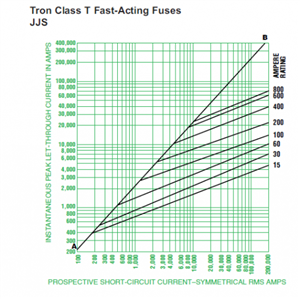Hi,
It appears that finding technical data for what must be the most widely used/produced fuse in the UK is surprisingly difficult. I have the Bussmann time-current curves for BS1362 (plug top) fuses. However, I'm unable to get the energy let-through and peak cut-off current graphs (Bussmann's technical dept. doesn't have this). Therefore, I was hoping someone on the forum could help.
The data I require doesn't have to be for Bussmann's BS1362 fuses. This could be for another manufacturer, e.g., Marbo. However, in that case I'd also (ideally) need the time-current curve. I would try Marbo's technical, but I'm unable to find contact details for this company. Does anyone have an old BS1362 datasheet with this information (that's been tucked away for the last 30 to 40 years)?
Many thanks in advance ?
